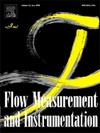Study on suppression of flow-induced noise in gas turbine fuel control valves
IF 2.3
3区 工程技术
Q2 ENGINEERING, MECHANICAL
引用次数: 0
Abstract
This study aims to address the lack of a well-established design method for fuel control valves in gas turbines, specifically in relation to noise comprehension and mitigation. It utilizes a theoretically validated and widely used precise numerical method to understand how flow induced noise is generated, evaluate the effectiveness of porous plates in noise suppression, and propose an optimized design method for reducing fuel control valve noise. Results reveal that the bias flow effect leads to an uneven force distribution at the valve core and an uneven flow in the outlet pipe. This uneven flow generates numerous vortices at valve throat, resulting in aerodynamic noise. Based on the understanding of the noise generation mechanism, it is found that using porous plates can effectively correct the bias effect at the valve core and suppress the eddy currents generated by bias current. Furthermore, in the pursuit of achieving an optimal design for noise reduction, a sensitivity analysis is performed and the impact on noise suppression varies across different parameters is observed. This study aims to investigate the mechanisms behind valve noise and explore suppression methods, ensuring the safe operation of gas turbine fuel control valves.
燃气轮机燃油控制阀流致噪声的抑制研究
本研究旨在解决燃气轮机中燃料控制阀缺乏完善的设计方法,特别是与噪音理解和缓解有关的设计方法。利用一种理论验证和广泛应用的精确数值方法来了解流动噪声的产生机理,评价多孔板的噪声抑制效果,提出一种降低燃油控制阀噪声的优化设计方法。结果表明,偏流效应导致阀芯处的力分布不均匀,出口管内的流量不均匀。这种不均匀流动在阀喉处产生大量涡流,导致气动噪声。在了解噪声产生机理的基础上,发现采用多孔板可以有效地纠正阀芯处的偏置效应,抑制偏置电流产生的涡流。此外,为了实现降噪的最佳设计,进行了灵敏度分析,并观察了不同参数对降噪的影响。本研究旨在研究燃气轮机燃油控制阀噪声产生的机理,探索抑制方法,确保燃气轮机燃油控制阀的安全运行。
本文章由计算机程序翻译,如有差异,请以英文原文为准。
求助全文
约1分钟内获得全文
求助全文
来源期刊

Flow Measurement and Instrumentation
工程技术-工程:机械
CiteScore
4.30
自引率
13.60%
发文量
123
审稿时长
6 months
期刊介绍:
Flow Measurement and Instrumentation is dedicated to disseminating the latest research results on all aspects of flow measurement, in both closed conduits and open channels. The design of flow measurement systems involves a wide variety of multidisciplinary activities including modelling the flow sensor, the fluid flow and the sensor/fluid interactions through the use of computation techniques; the development of advanced transducer systems and their associated signal processing and the laboratory and field assessment of the overall system under ideal and disturbed conditions.
FMI is the essential forum for critical information exchange, and contributions are particularly encouraged in the following areas of interest:
Modelling: the application of mathematical and computational modelling to the interaction of fluid dynamics with flowmeters, including flowmeter behaviour, improved flowmeter design and installation problems. Application of CAD/CAE techniques to flowmeter modelling are eligible.
Design and development: the detailed design of the flowmeter head and/or signal processing aspects of novel flowmeters. Emphasis is given to papers identifying new sensor configurations, multisensor flow measurement systems, non-intrusive flow metering techniques and the application of microelectronic techniques in smart or intelligent systems.
Calibration techniques: including descriptions of new or existing calibration facilities and techniques, calibration data from different flowmeter types, and calibration intercomparison data from different laboratories.
Installation effect data: dealing with the effects of non-ideal flow conditions on flowmeters. Papers combining a theoretical understanding of flowmeter behaviour with experimental work are particularly welcome.
 求助内容:
求助内容: 应助结果提醒方式:
应助结果提醒方式:


